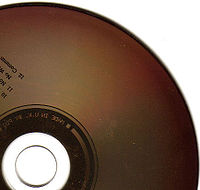
Photo from wikipedia
Iron powder was coated with phosphate and polysiloxanes for anti-corrosion and insulation. Whether these coating layers sustain the hydraulic pressure of compaction was investigated. Electrochemical measurements were applied on the… Click to show full abstract
Iron powder was coated with phosphate and polysiloxanes for anti-corrosion and insulation. Whether these coating layers sustain the hydraulic pressure of compaction was investigated. Electrochemical measurements were applied on the compacts comprising surface-coated iron powders to understand the performance of the coating layers undergone a series of compaction pressure. As phosphate coating was applied, the corrosion resistance was obviously enhanced; nevertheless, as the compaction pressure exceeded a threshold, the corrosion resistance dropped greatly due to the formation of cracks in the phosphate layer, suggesting the phosphate layer was brittle and could not bear high pressure. As a phosphate layer and a polymeric coating layer of amino polysiloxane were in turn applied, the corrosion resistance of the doubly-coated iron powder in the salt bath declined since the ammonium group absorbed chloride ions and deteriorated the anti-corrosion ability. After salt-fog treatment, the compacts with the grafted silane tended to form the rust layer with akaganeite phase while these without grafted silane did not, attesting that the polysiloxane did attract chloride ions. Interestingly, with the existence of polysiloxane, the cracking of the phosphate layer was effectively avoided. The polysiloxane layer could protect the underneath phosphate layer from cracking. Moreover, with the increase of compaction pressure, the corrosion resistance of the doubly-coated iron powder gradually increased due to the densification of the polysiloxane layer, which consequently hindered the chloride ions from diffusion into the surface of the iron particle.
Journal Title: Protection of Metals and Physical Chemistry of Surfaces
Year Published: 2017
Link to full text (if available)
Share on Social Media: Sign Up to like & get
recommendations!